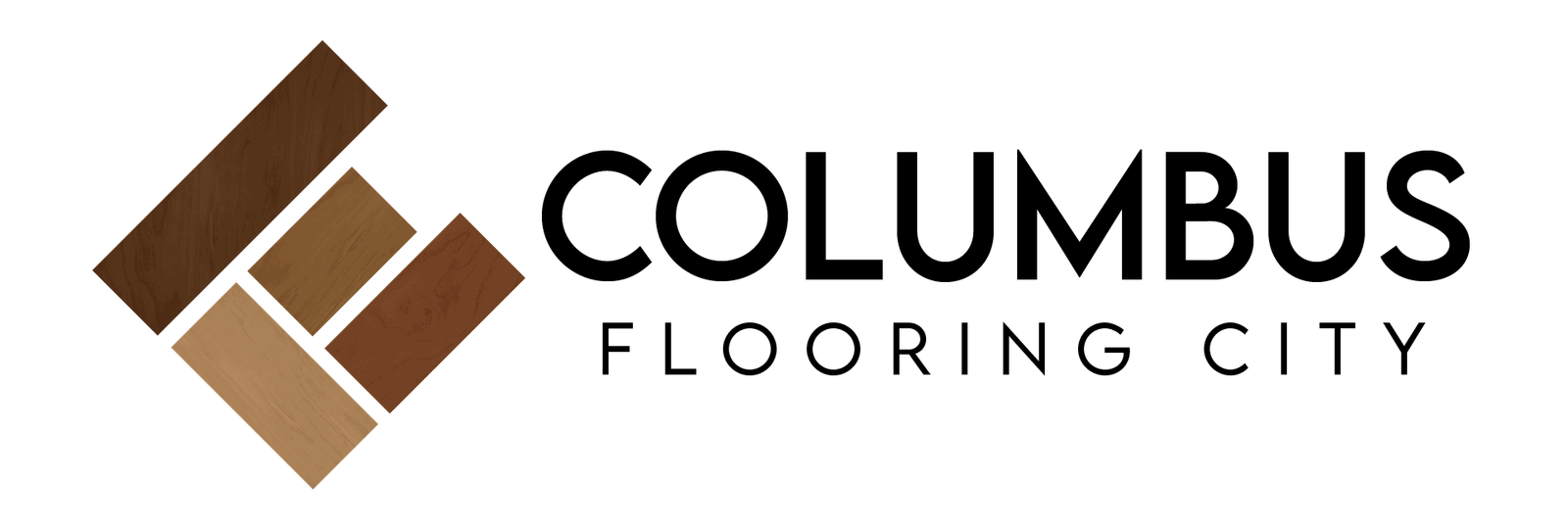Are you looking for a flooring solution to enhance your home’s looks while bringing rustic warmth and classic elegance? Hardwood flooring is the only option. We will cover all you need to know about them in this ultimate guide to hardwood flooring.
With its inherent beauty, durability, and ability to transcend trends, hardwood flooring has remained a popular choice among homeowners for generations. Whether you prefer oak’s classic charm, maple’s sleek modernity, or walnut’s luxurious allure, hardwood flooring offers diverse options to suit every style and preference.
So, stick with us and learn how it can make your home an oasis of beauty and refinement.
Exploring Hardwood Species: A World of Natural Elegance
Choosing the suitable hardwood species is one of the most crucial aspects of hardwood flooring. Each species has its unique characteristics, appearance, and durability. Let’s examine some prominent hardwood species you should consider in more detail.
Oak:
Due to its durability and adaptability, oak is the most popular hardwood species used in flooring. It comes in various finishes and grain patterns, providing any space with a classic and timeless look.
Maple:
Maple hardwood flooring offers a clean and contemporary aesthetic with its light color and smooth grain. It is a sensible option for locations with heavy traffic since it is robust and resistant to wear and strain.
Cherry:
Cherry wood flooring brings a rich and warm tone to a room, ranging from reddish-brown to deep red. Over time, it acquires a lovely patina that gives it character and charm.
Walnut:
Walnut hardwood flooring is prized for its luxurious and elegant appearance. It features deep, rich hues and distinctive grain patterns, creating a sense of luxury and sophistication.
Hickory:
Hickory hardwood flooring showcases unique grain patterns with contrasting light and dark streaks. It is highly durable and resilient, making it an excellent choice for areas with high foot traffic.
Birch:
Birchwood offers a fine texture and a consistent color palette. It has a smooth and sleek look that complements modern and contemporary interiors.
Types of Hardwood Flooring: From Solid to Engineered
When going through the guide to hardwood flooring, understanding the different Types of hardwood Flooring is essential in our guide. Let’s explore some popular options:
Solid Hardwood:
Solid hardwood flooring is made entirely of natural wood, offering unmatched beauty and durability. Each plank is crafted from a single piece of timber, showcasing the wood’s unique characteristics. Solid hardwood can be sanded and refinished multiple times, allowing customization and restoration.
Engineered Hardwood:
Engineered hardwood flooring is constructed by bonding a thin layer of natural wood to several layers of high-quality plywood or fiberboard. This layered structure provides enhanced stability and resistance to moisture and temperature fluctuations. Engineered hardwood offers versatility in design since it comes in various designs and finishes.
Laminate Flooring:
A less expensive option for hardwood flooring is laminate flooring. It consists of a photographic layer that mimics the appearance of wood, adhered to a composite core. While it doesn’t offer the exact authenticity of natural wood, laminate flooring is highly durable, easy to install, and resistant to stains and scratches.
Reclaimed Hardwood:
Reclaimed hardwood flooring is sourced from salvaged timbers, giving it a unique character and history. It offers an eco-friendly option for those seeking sustainable flooring and adds a rustic and vintage charm to any space.
Bamboo Flooring:
Although not officially hardwood, bamboo flooring is popular because of its longevity and environmental friendliness. A rapidly expanding grass that can be harvested responsibly is bamboo. It is available in various styles, including solid bamboo and engineered bamboo.
Style Your Space: Discovering Different Hardwood Flooring Styles
The overall aesthetics of your area may be greatly influenced by the type of hardwood flooring you select. However, this is among the most essential things you should know about in our guide to hardwood flooring. Let’s explore some popular styles:
Traditional:
Traditional hardwood flooring styles feature wide planks and natural finishes emphasizing the wood’s natural beauty. Oak and maple are commonly used in traditional styles, creating a warm and inviting ambiance reminiscent of classic interiors.
Contemporary:
Contemporary hardwood flooring styles often showcase sleek and minimalist designs. Light-colored woods like maple or birch with a smooth finish are common choices, adding a sense of openness and modernity to a space.
Rustic:
Rustic hardwood flooring styles highlight the natural imperfections and character of the wood. Distressed or hand-scraped finishes with visible knots and grain patterns are popular in rustic styles, creating a cozy and welcoming atmosphere.
Transitional:
Transitional hardwood flooring styles bridge the gap between traditional and contemporary aesthetics. They often combine elements of both styles, such as incorporating wider planks with a matte finish or using alternative wood species like hickory for added visual interest.
Exotic:
Exotic hardwood flooring styles feature species worldwide, offering unique colors and grain patterns. Woods like Brazilian cherry or tigerwood provide a distinct and striking look, adding a touch of luxury and sophistication to any space.
Finishing Touches: Enhancing Hardwood Flooring with Finishing Options
Choosing the right finish for your hardwood floor is crucial as it enhances its appearance and protects against wear and tear. Here are some popular finishing options we have listed in this guide :
Matte Finish:
Matte finishes provide a natural and understated look, reducing the appearance of scratches and imperfections. They have a smooth, non-reflective surface that adds a sophisticated, contemporary touch to hardwood flooring.
Satin Finish:
Satin finishes strike a balance between matte and glossy. They offer a subtle sheen that enhances the natural beauty of the wood while still providing some durability and scratch resistance. Satin finishes are versatile and suitable for various interior styles.
Glossy Finish:
Glossy finishes deliver a high-shine and reflective surface, creating a polished and luxurious appearance. They add depth and richness to the wood’s color and grain, making them popular for formal and upscale settings.
Distressed Finish:
Distressed finishes replicate the look of aged and weathered wood. They feature intentional markings, scrapes, and dents, providing the flooring with a rustic and vintage charm. Distressed finishes are ideal for creating a lived-in and character-filled ambiance.
Wire-Brushed Finish:
Wire-brushed finishes offer a textured look by scraping the soft grain of the wood, enhancing the natural texture and emphasizing the wood’s unique characteristics. They add depth and visual interest to the flooring, making it a popular choice for those seeking a slightly rustic and aged appearance.
Our exquisite hardwood flooring collection is crafted to transform your space into a timeless masterpiece. Our carefully selected oak, maple, and cherry hardwood floors offer unmatched beauty, durability, and versatility. With their rich colors, distinct grain patterns, and superior craftsmanship, these floors are designed to enhance any interior style, from traditional to contemporary. Experience the elegance and warmth of natural wood with our high-quality hardwood flooring, expertly installed to perfection. Elevate your home or commercial space with our hardwood floors’ natural beauty and lasting appeal.
[Product listing here]
Installing Hardwood Flooring: A Guide to Achieving Perfection
Proper installation is essential to ensure the longevity and beauty of your hardwood floor. While hiring a professional is recommended, understanding the installation process can help you make informed decisions. In this comprehensive guide to hardwood flooring, we have covered the following general flooring installation information.
Subfloor Setting Up:
There are different hardwood installation methods. A successful installation of hardwood flooring depends on the subfloor’s preparation. It ensures the subfloor is clean, level, and dry, providing a stable foundation for the hardwood planks.
Nail-down Installation:
Nail-down installation involves attaching the hardwood planks to the subfloor using nails or staples. This method provides a secure and permanent installation, especially for solid hardwood floors.
Glue-down Installation:
Glue-down installation requires applying adhesive to the subfloor and placing the hardwood planks directly on top. It is suitable for concrete or plywood subfloors and provides a strong bond.
Floating Installation:
Floating installation involves interlocking the hardwood planks together without attaching them to the subfloor. This method is popular for engineered hardwood floors and allows for easy installation and future removal if needed.
Finishing and Trimming:
Once the hardwood planks are installed, the finishing touches are applied. This includes trimming excess planks, filling gaps with wood putty, and adding baseboards or molding for a clean and polished look.
Maintaining the Beauty: Care and Maintenance of Hardwood Floors
Hardwood maintenance is vital to preserving its beauty and durability. Here are some essential maintenance and wood floor care tips to keep in mind:
Regular Cleaning:
Regularly sweeping or vacuuming your hardwood floors helps remove dirt and debris that can scratch the surface. Use a soft-bristle broom or a vacuum with a floor brush attachment to avoid causing any damage.
Avoid Excess Moisture:
Hardwood floors are sensitive to moisture, so cleaning up spills immediately and avoiding wet mopping is essential. Use a damp (not wet) mop or a hardwood floor cleaner specifically formulated for wood surfaces.
Protect from Scratches:
Use protective pads or felt furniture glides under furniture legs to prevent scratches when moving or rearranging furniture—place doormats at entryways to trap dirt and prevent it from being tracked onto the floor.
Refinishing and Recoating:
Over time, hardwood floors may show signs of wear and tear. Refinishing and recoating the surface can restore its original beauty. This involves sanding down the existing finish, applying a new stain if desired, and adding a protective layer of polyurethane or another suitable finish.
Avoid Direct Sunlight:
Prolonged exposure to direct sunlight can cause fading and discoloration of hardwood floors. Use window treatments like blinds or curtains to protect your floors from excessive UV rays.
Advantages of Hardwood Flooring: Beauty, Durability, and More
Even though there are some pros and cons of hardwood flooring, this flooring offers numerous advantages that make it a popular choice among homeowners. Let’s explore some key Hardwood flooring advantages:
Timeless Elegance:
Hardwood flooring offers a timeless and classic appeal that never goes out of style. It adds sophistication and charm to any space, enhancing the overall aesthetics of your home.
Durability and Longevity:
Hardwood flooring is renowned for its sturdiness and endurance. Proper care and maintenance can last for decades, making them a cost-effective investment in the long run.
Versatility in Design:
Hardwood flooring comes in various species, colors, finishes, and styles, offering various design options. Whether your style is traditional, contemporary, or rustic, there’s a hardwood flooring option to suit your preferences.
Enhanced Property Value:
Hardwood flooring installation can raise the value of your house. Its timeless appeal and durability are attractive features for potential buyers, making it a worthwhile investment for homeowners.
Allergy-Friendly:
Hardwood floors are an excellent choice for those with allergies or respiratory sensitivities. They don’t harbor dust, pollen, or other allergens, making maintaining a clean and healthy living environment easier.
Considering the Drawbacks: Exploring the Disadvantages of Hardwood Flooring
While hardwood flooring has numerous advantages, it’s essential to consider potential drawbacks before deciding. Let’s explore some Hardwood flooring disadvantages we have listed in this guide to hardwood flooring:
Moisture Susceptible:
The susceptibility of hardwood floors to dampness is one of its principal drawbacks. Excess water or humidity can cause the wood to warp, swell, or cup. It is not advised for moist or spill-prone spaces like bathrooms or basements.
Prone to Scratches and Dents:
While hardwood flooring is durable, it is not entirely scratch-resistant. Sharp objects, pet claws, and heavy furniture can leave scratches and dents on the surface. However, these imperfections can often be minimized or repaired through proper maintenance and refinishing.
Maintenance Requirements:
To keep hardwood flooring looking its best, routine upkeep is necessary. This includes routine cleaning, refinishing, and recoating. Neglecting maintenance can result in a dull appearance or potential damage.
Initial Cost:
Hardwood flooring can have a higher initial cost than other options, including materials and professional installation. However, its longevity and durability can offset the upfront investment over time.
Noise and Sound Transmission:
Hardwood floors can contribute to noise transmission, especially in multi-story homes or apartments. Without proper acoustic underlayment or area rugs, footsteps and other sounds can be amplified, potentially causing disturbances.
Buying Guide: Tips for Choosing the Perfect Hardwood Flooring Consider the Wood Species:
Choosing the perfect hardwood flooring for your home can be exciting but challenging. Here are some buying tips we have added in our guide to hardwood flooring to help you make an informed decision and make your hardwood flooring cost worthy:
Evaluate the Finish:
Pay attention to the finish of the hardwood flooring, as it affects the appearance, durability, and maintenance requirements. Choose a finish that aligns with your desired aesthetic and lifestyle.
Assess the Installation Method:
Consider the installation method that suits your needs and skill level. While nail-down installations provide a secure and permanent option, floating or glue-down installations offer more flexibility and ease of installation.
Budget Considerations:
Set a budget for your hardwood flooring project and explore options within your price range. Remember that higher-quality hardwood flooring may cost more upfront but can offer better durability and longevity.
Seek Professional Advice:
Consult with flooring professionals or contractors for expert guidance on selecting the right hardwood flooring for your specific needs. They can provide insights into the best options for your budget, lifestyle, and design preferences.
You may alter your area and add years of beauty and practicality by choosing the ideal hardwood flooring by using this advice to make an educated selection.
Conclusion
Hardwood flooring offers a timeless and elegant option for enhancing the beauty of your home. With various hardwood species, types, styles, finishing options, and installation techniques available, you can choose the perfect flooring that suits your taste and complements your interior design.
Thanks to our guide to hardwood flooring, you have learned a lot about the world of hardwood floors. From understanding different species and styles to installation and maintenance, you now have the knowledge to choose and care for hardwood flooring that suits your needs. Enjoy the timeless beauty and durability that hardwood floors bring to your home.
FAQs
What type of hardwood flooring is best?
The finest hardwood flooring will rely on several things, including your tastes, budget, and the demands of your particular area. While engineered hardwood flooring offers improved stability and moisture resistance, solid hardwood flooring delivers unparalleled beauty and longevity. It’s essential to consider factors like the wood species, finish, and installation method to determine the best type for your needs.
What should I know regarding hardwood flooring?
A classic and stylish flooring option, hardwood floors bring warmth and beauty to any room. They require regular maintenance to keep them looking their best and can be susceptible to moisture and scratches. Making an informed choice and ensuring the durability of your hardwood floors will require a thorough understanding of the various wood species, kinds of hardwood flooring, installation procedures, and maintenance needs.
What is the best layout for hardwood floors?
The best layout for hardwood floors depends on your space’s specific dimensions and layout and your personal preferences. Standard layout options include running the planks parallel to the longest wall or following the direction of natural light. For your hardwood floors to be laid out in the most visually acceptable and practical way possible, it’s crucial to consider elements like the room’s form, size, and architectural aspects.
What are the three popular types of hardwood flooring?
Solid hardwood, engineered hardwood, and laminate flooring are the three most common forms of hardwood flooring. Solid hardwood is made entirely of natural wood, offering unmatched beauty and durability. Engineered hardwood consists of a thin layer of natural wood bonded to plywood layers for enhanced stability. Laminate flooring, while not technically a hardwood, mimics the look of wood with a photographic layer adhered to a composite core.


